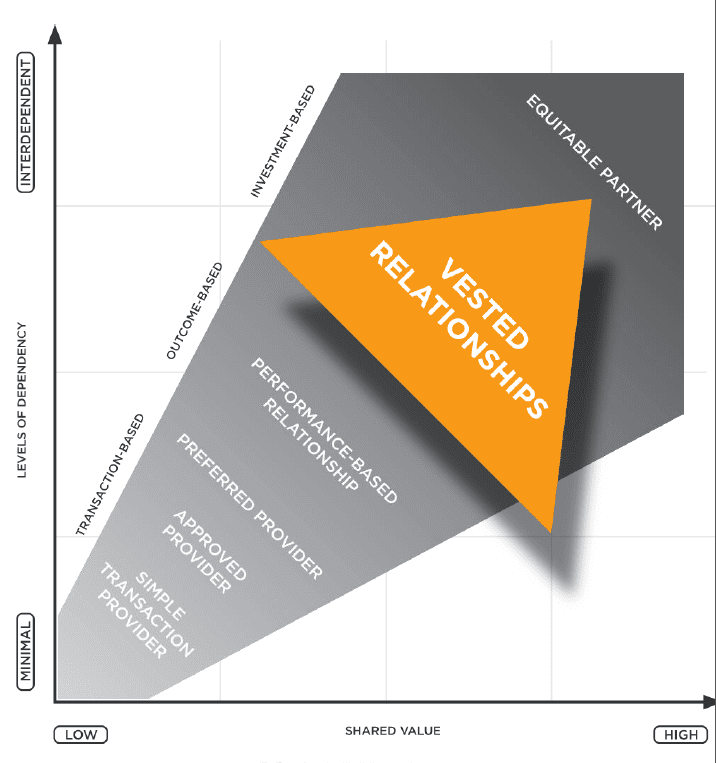 | ||
Vested outsourcing five rules that will transform outsourcing
Vested (also referred to as “Vested Outsourcing”) is a hybrid business model in which both parties (the company and the service provider) in an outsourcing or business relationship focus on shared values and goals to create an arrangement that is mutually beneficial to each.
Contents
The Vested model argues that traditional outsourcing and businesses relationships are focused on win-lose arrangements where one party benefits at the other’s expense. In contrast, a Vested agreement creates a win-win relationship in which both parties are equally invested in one another’s success.
This shared-value mindset is the basis of a Vested agreement. The parties must agree upon a “Desired Outcome” that can be objectively measured to determine if the relationship is successful. This outcome can include cost reductions, revenue increases, schedule improvements, increased market share and better levels of customer service.
More than simply focusing on the success of the contractual relationship, Vested commits both the company and the service provider to the success of each other’s overall business. This strengthens the sense of partnership and encourages a more lasting relationship. By sharing their expertise and aligning their goals, both parties are able to drive innovation, adapt to changing needs and mitigate risk while working towards mutual success.
Vested relationships depend on collaboration, transparency, flexibility and trust. Rather than traditional business relationships in which companies buy transactions or services from suppliers, Vested relationships instead focuses on buying results.
Vested applies to a variety of industries and has been adopted by companies like P&G, McDonald’s, Microsoft, Dell and GENCO.
